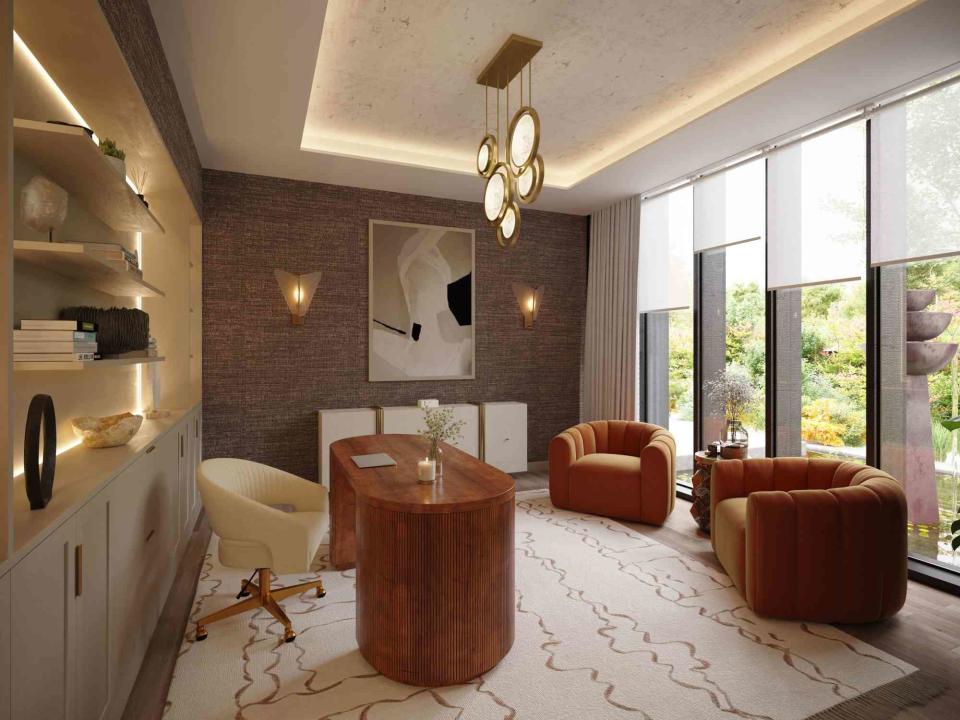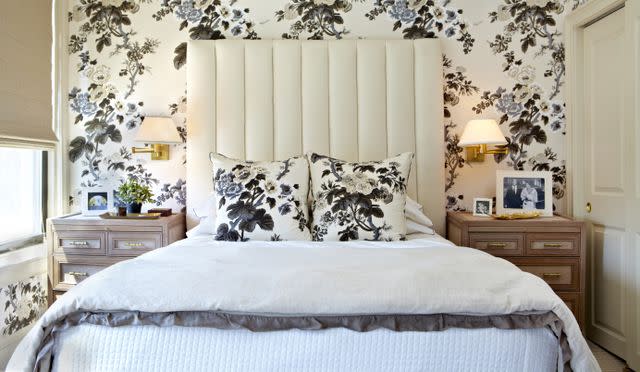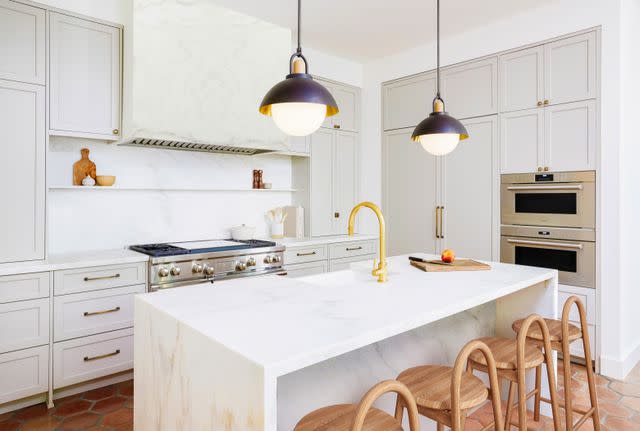The Difference Between Soft White and Daylight Light Bulbs—and Where to Use Each
Each type of light bulb emits a different temperature and brightness.

There are quite a few moving parts to consider when designing a space. You want to pick the perfect color palette punctuated by all the right textures and prints, incorporate furniture that fuses function and beauty, and weave in complementary accents where they make sense. One small detail that often gets overlooked is your lighting. Not just light fixtures but the types of bulbs you place inside.
"The right lighting can absolutely transform a space by creating a feeling or ambiance, so it’s the first factor I consider when designing a space," says Holly Kopman, founder and principal at Holly A. Kopman Interior Design.
When choosing the perfect lighting for your home, you’ll likely find yourself in the light bulb aisle trying to decide between soft white vs. daylight bulbs. Each offers a distinct effect, so let’s dive into the differences between the two so you can choose the right one for your needs.
Meet Our Expert
Holly Kopman, founder and principal at Holly A. Kopman Interior Design
Related: 6 Ways to Brighten Up a Dark Room, According to Interior Designers
Understanding Light and Color Temperature
Light temperature—meaning how warm or cool the emitted color tone is when the bulb’s turned on—is measured in Kelvins. Lower Kelvins translate to warmer, cozy tones that give off a yellow light while the highest Kelvins give off a cooler, blue-leaning light.
To paint a clearer picture, at the very low end of the spectrum, you’ve got things like the flickering glow of candlelight—very yellow and warm—which is about 1,000 Kelvins. Bright blue LED lights are an example of a light source at the high end of the spectrum, peaking at around 10,000 Kelvins.
Naturally, there’s a huge range of color temperatures between these two bookends. That’s where you’ll find both soft white light bulbs and daylight light bulbs.
The Difference Between Soft White Light Bulbs and Daylight Light Bulbs
When you look at soft white and daylight bulbs on the greater Kelvin scale, they’re somewhat close to each other. Soft white light bulbs, which are between 2,000 and 3,000 Kelvins, are slightly lower in temperature and emit a warm and cozy light. Daylight bulbs come in a few notches higher on the scale—between 5,500 and 6,500 Kelvins—and therefore have a cleaner, more pure white tone.
When choosing between soft white and daylight bulbs, it’s not that one’s inherently better than the other or that either has "pros” and “cons." Rather, each type of bulb has its own use-case scenarios; in some cases, it simply boils down to temperature preferences. "People respond differently to different temperatures, so this is something I tailor to each homeowner," Kopman says.

Jacob Snavely
Where to Use Soft White Bulbs
With their slightly warmer tone, soft white light bulbs are perfect for any space where you want to create a cozier, more subdued atmosphere. "Soft lighting is perfect for living rooms or dining rooms where you entertain and want the relaxed atmosphere," Kopman says. They’re also excellent for bedrooms or reading nooks where that cozy ambient light is conducive to relaxation.
Perfect For:
Bedrooms
Living Rooms
Reading Nooks
Dining Rooms
Related: 12 Dining Room Light Fixtures That Add Ambience to the Space

Where to Use Daylight Bulbs
Daylight bulbs provide a brighter white light, making them perfect for any room where tasks are done. This includes the kitchen, work or home office, laundry room, and even bathrooms. Kopman adds that this type of light bulb is also great for home gyms and garages. If you need to use your eyes to tackle tasks, opt for a daylight bulb over a soft white bulb.
Perfect For:
Kitchens
Offices
Laundry Rooms
Gyms
Garages
Attics
Work Spaces
Related: 3 Types of Home Lighting and How to Layer Them to Create a Beautiful and Functional Room
Tips for Choosing Between Soft White and Daylight Bulbs
The use-case scenarios above are pretty straightforward. When you want to turn up the cozy vibes in a space, then soft white bulbs are the way to go. When you need a brighter light, then daylight bulbs are your best bet. Here are some more pro tips to consider when choosing between the two.
Keep It Consistent
Try not to mix two different types of light as your main light within the same space, Kopman says. For example, if you’ve got bedside lamps or lamps on either side of your couch, make sure the bulbs match. Mismatched lighting can feel jarring.
Layer Your Lighting
You can strategically mix your lights in a room by choosing different bulbs for different levels of light. For example, your overhead ambient light can be a soft white bulb while your task lighting—turned on for specific activities like reading or working—is a daylight bulb.
Find a Happy Medium
If soft white feels too yellow, but daylight bulbs are too bright, Kopman says to find a bulb in the middle—around 3,000 Kelvins. She says it’s still soft but offers a bit more illumination.
Consider Your Decor
You may want to consider your interior aesthetic when choosing soft white vs. daylight bulbs. The former blends nicely with warm-leaning color schemes and cozy aesthetics while the latter complements cool tones and urban or industrial vibes.
Read the original article on Martha Stewart.

